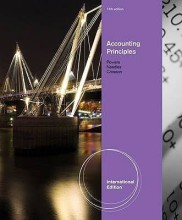Summary: Planning For Forest And Nature Conservation: Theories, Tools And Practices
- This + 400k other summaries
- A unique study and practice tool
- Never study anything twice again
- Get the grades you hope for
- 100% sure, 100% understanding
Read the summary and the most important questions on Planning for forest and nature conservation: Theories, Tools and Practices
-
College 1
This is a preview. There are 8 more flashcards available for chapter 15/03/2021
Show more cards here -
Learning outcomes for this course?
- Explain different concepts and theories about planning
- Apply different tools for planning
- Evaluate when to use which approach
- Analyse (dis)-advantages of different approaches
- Explain different concepts and theories about planning
-
Explain the theory of Elenor Ostrom about socio-ecological systems approach
Ostrom believes that sociological and ecological systems influence eachother, and can influence eachother in a positive way -
What is the definition, aim and people involved with the protected area approach?
Bringing tohether differentstakeholders of anarea in whichentities , including humans,interact according to rules (physical, biological, social) that determine their relationships in amultidisciplinary ,holistic way to make aframework for people to govern land by the private sector, communities, land & product users, conservation NGOs, governments and financers -
College 2 Value chain
This is a preview. There are 8 more flashcards available for chapter 16/03/2021
Show more cards here -
What is the definition of a value chain?
Series ofoperation in whichutility is added to goods and services to enhance (customer/societal ) value -
Who are the people involved in each step of a value chain?
Harvester ,Processor ,Wholesaler ,Exporter ,Retailer ,Consumer -
What 3 concepts will determine the sustainability of a value chain?
- Species characteristics: abundance, threats, vulnerability, tolerance to harvesting
- Chain governance: regulating access to species and markets to avoid unsustainable exploitation
- Context dependance: rural poor
- Species characteristics: abundance, threats, vulnerability, tolerance to harvesting
-
How to use value chains in planning?
- Map activities of dynamics of trade and
globalization - Understand economic links between
firms , landscapes and countries - Spread out benefits of participation for different
stakeholders - Show
stakeholders capacities to gain benefits - Intervene economically, socially or environmentally
- Map activities of dynamics of trade and
-
Competitiveness is really appicable to value chains. What is competitiveness based on?
Based onprice ,efficiency, quality andquantity , access to rawmaterials ,information ,uniqueness ,innovation ,branding ,advertising ,service , environmental or socialvalues -
What is value chain governance?
Regulatinginstitutions andrules determine theplaying field for a value chain and how a chain is regulated and enforced -
What does value chain governance consist of?
Traditional laws andstatutory law- Collective voluntary and market
approaches Conventions Project rules Hybrids
- Higher grades + faster learning
- Never study anything twice
- 100% sure, 100% understanding
































